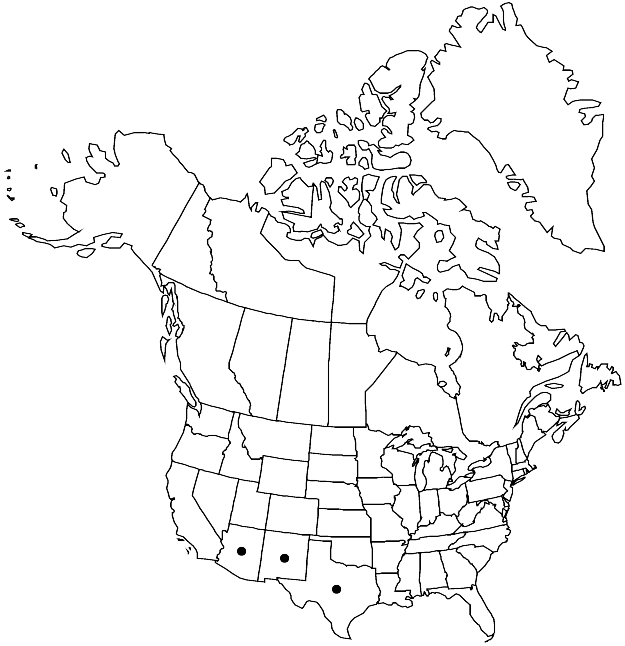Difference between revisions of "Descurainia brevisiliqua"
Harvard Pap. Bot. 12: 421. 2007.
FNA>Volume Importer |
imported>Volume Importer |
||
| (One intermediate revision by the same user not shown) | |||
| Line 52: | Line 52: | ||
|publication year=2007 | |publication year=2007 | ||
|special status= | |special status= | ||
| − | |source xml=https:// | + | |source xml=https://bitbucket.org/aafc-mbb/fna-data-curation/src/2e0870ddd59836b60bcf96646a41e87ea5a5943a/coarse_grained_fna_xml/V7/V7_819.xml |
|tribe=Brassicaceae tribe Descurainieae | |tribe=Brassicaceae tribe Descurainieae | ||
|genus=Descurainia | |genus=Descurainia | ||
Latest revision as of 22:36, 5 November 2020
Biennials; eglandular; finely pubescent, often canescent, trichomes dendritic, rarely also mixed with simple ones. Stems erect, unbranched basally, branched distally, 6–11 dm. Basal leaves: petiole 0.5–1.5 cm; blade pinnate, oblanceolate to obovate or ovate in outline, 1–5 cm, lateral lobes (2–5 pairs), linear, margins entire or serrate to incised (apex obtuse). Cauline leaves sessile or shortly petiolate; blade smaller distally, distal lobes often narrower, surfaces densely pubescent. Racemes (paniculate, often with short branches), considerably elongated in fruit. Fruiting pedicels divaricate-ascending, straight, 4–7(–11) mm. Flowers: sepals spreading, yellowish, oblong, 1.4–2 mm, pubescent, (trichomes dendritic, sometimes mixed with simple ones); petals oblanceolate, 0.7–1 × 0.1–0.2 mm; median filaments 1.5–2 mm; anthers 0.2–0.3 mm. Fruits divaricate to erect, linear to oblong, not torulose, 3–8(–10) × 1–1.2 mm; valves each with distinct midvein; septum not veined; ovules 10–28 per ovary; style obsolete to 0.1 mm, glabrous. Seeds biseriate, light brown, ellipsoid, 0.5–0.7 × 0.3–0.4 mm. 2n = 42.
Phenology: Flowering (late Jun-)Jul–Aug(-early Oct).
Habitat: Pine and juniper communities, rocky washes, roadsides, grasslands, gravelly mesa
Elevation: 1900-2500 m
Distribution

Ariz., N.Mex., Tex.
Discussion
R. C. Rollins (1993) reduced Descurainia brevisiliqua to synonymy of the diploid D. obtusa. This hexaploid species differs from the latter in having biseriate (versus uniseriate) seeds and glabrous (versus densely to moderately pubescent) fruits. Molecular data (B. E. Goodson 2007) show that it is consistently separate from, and unrelated to, D. obtusa, instead being affiliated with D. incana and D. incisa. Descurainia brevisiliqua differs from the latter two species by having biseriate (versus uniseriate) seeds and oblong, non-torulose fruits that, unlike those of D. incana, are not appressed to rachises. Although the fruits of D. brevisiliqua resemble those of some D. pinnata subspecies, it can be readily distinguished from the latter by its tall, strict growth habit with numerous short branches in the distal part of the plant, more linear leaf segments, stems that are usually purple, and late–summer flowering period.
Selected References
None.